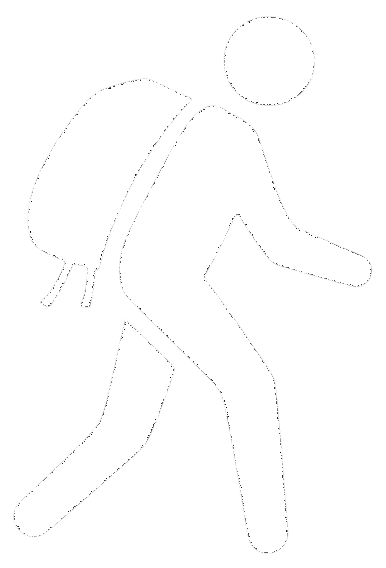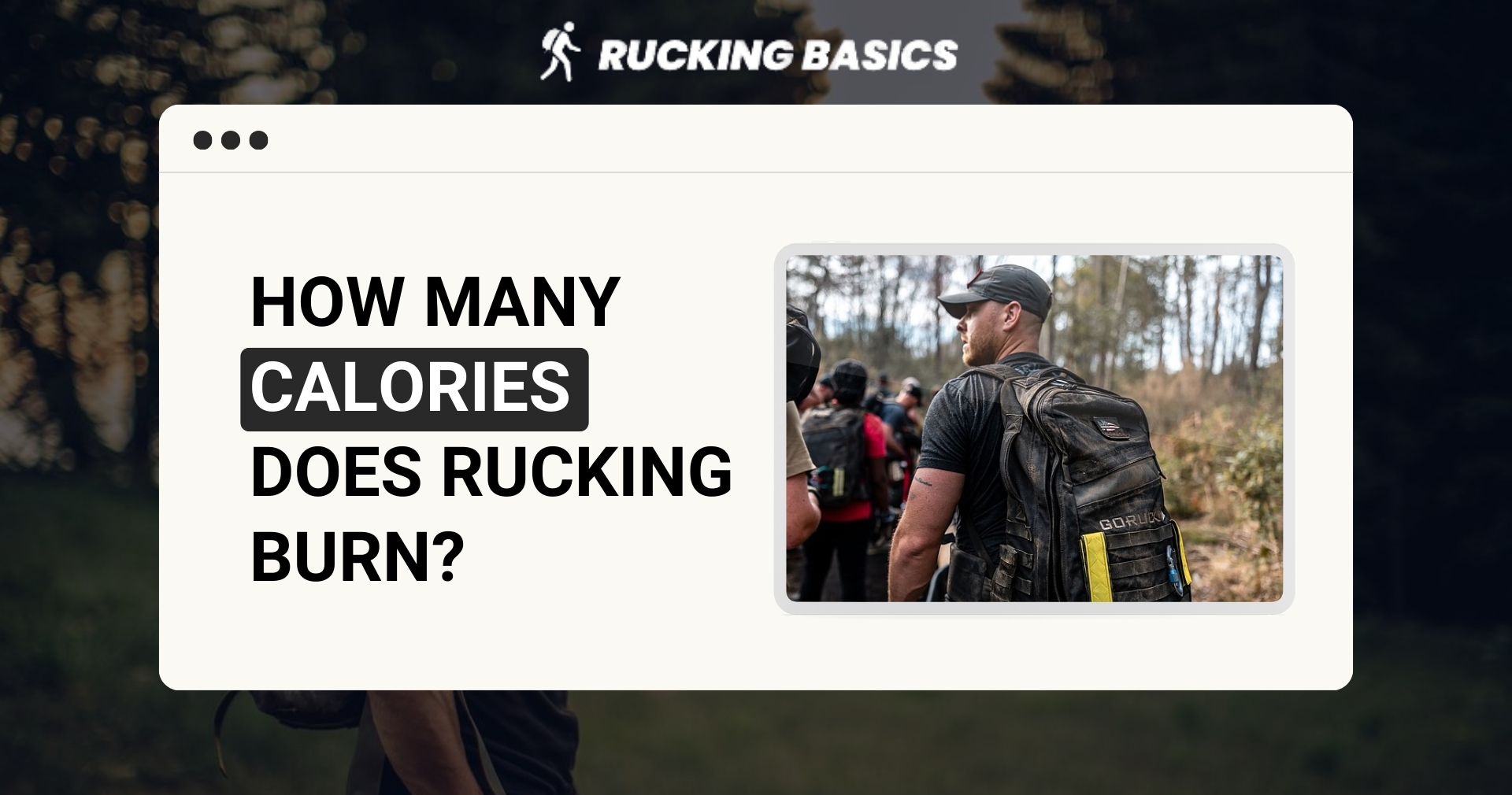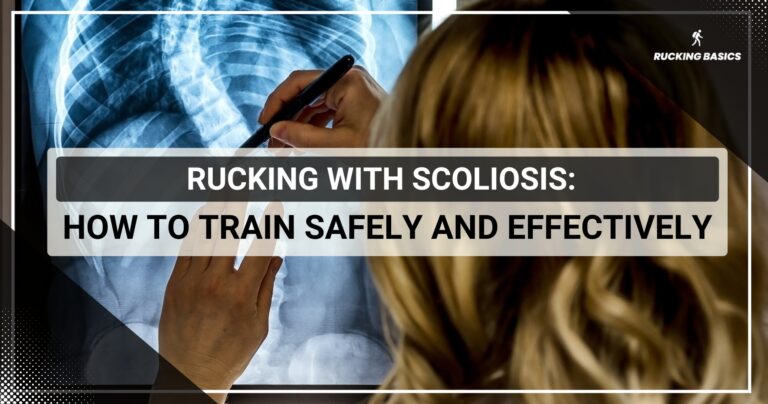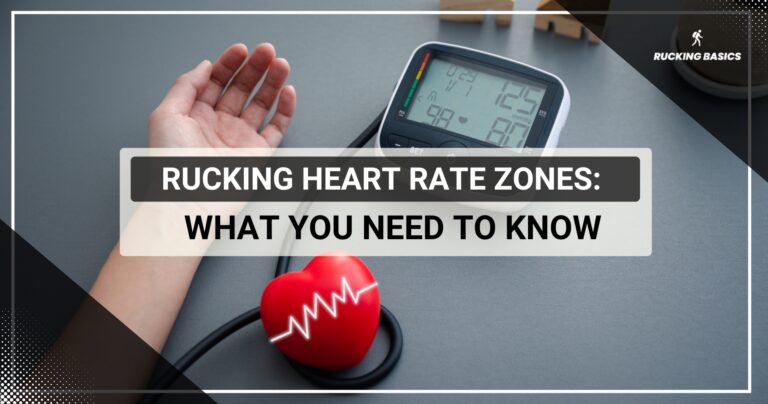If you’re new to rucking or looking to understand its full benefits, you might be curious about how many calories does rucking burn.
Rucking can burn between 400 and 600 calories per hour, depending on factors like your weight, the load you’re carrying, and the intensity of your ruck.
I’ve found rucking to be one of the most efficient ways to get a solid workout without feeling stuck doing monotonous cardio. I never had problems with body weight, so I started rucking a few years ago to shake up my usual fitness routine. I quickly realized it is a perfect way to get stronger and burn calories. And the best part? It never felt like a chore, which kept me returning to it regularly.
Let’s explore how rucking impacts calorie expenditure, the key factors influencing how much you burn, and practical tips to maximize your calorie burn.
How Many Calories Does Rucking Burn?
As I already mentioned, the average person will probably burn between 400 and 600 calories per hour while rucking. Yet, I can’t claim it will be 100% true. Fitness coaches often too lightly claim that certain activities burn precisely that amount of calories, while this number can fluctuate significantly.
One thing is for sure — the intensity of your ruck directly influences the amount of calories you burn. Maintaining an appropriate rucking pace is crucial to optimizing calorie burn, as the speed and consistency of your walk impact energy expenditure.
Compared to walking, which might burn around 200-300 calories per hour, rucking can double those numbers. Added weight is the reason. It also tends to burn more calories than other common activities like jogging, which typically burns about 300-450 calories per hour, or cycling at a moderate pace, which ranges from 400 to 500 calories per hour.
On the other hand, running, faster cycling, and martial arts can burn twice as many calories in one hour.
Factors Affecting Calorie Burn During Rucking
While the general range of calories burned can be estimated, the actual number can vary based on the specific conditions of your ruck.
Weight of the Backpack
One of the most crucial factors is the weight of the backpack you carry. The more weight you add to your pack, the more energy your body must exert to carry it, which leads to a higher calorie burn.
For example, if you’re carrying a 20-pound backpack, you’ll burn significantly more calories than someone carrying a 10-pound pack because your muscles work harder to support the additional load.
However, this does not mean you should overload your body too quickly to burn as many calories as possible. If you’re new to rucking, understanding how to start rucking safely can make a huge difference. Build your endurance gradually to avoid injury and burnout.
Intensity and Pace
The faster and more intense your pace, the more energy your body will need, which means more calories burned. Logical, right?
If you’re looking to maximize your calorie expenditure, consider intervals of faster walking or even jogging while rucking. Yet, your fitness level must be suitable for such a thing.
Terrain and Incline
Walking on flat ground is effective, but walking in rugged, uneven terrain, such as trails or forest paths, requires more energy.
Similarly, inclines and hills force your muscles to work harder, particularly your glutes, calves, and quads. Even small changes in elevation can make a big difference.
Body Weight and Composition
Your body weight and composition are often overlooked, but they are significant.
Generally, the more you weigh, the more energy your body needs to move, meaning you’ll burn more calories than someone who weighs less.
Muscle mass is another important factor—those with more muscle tend to burn more calories, even at rest, because muscle tissue requires more energy to maintain than fat. Once you build muscle, you’ll likely notice an increase in calories burned during your rucking.
How to Increase Calorie Expenditure While Rucking?
Here are ways to make rucking a real calorie-burning activity:
- Increasing Load: Add a few pounds every week to continue challenging yourself without overwhelming your body. Weighted backpack will boost calorie burn constantly, which will have a positive effect on your body weight/composition.
- Varied Terrain: This is easier said than done if you live in the city. But even in that case you can simulate conditions on the treadmill. Try to include hills, trails, and uneven surfaces to make your ruck more challenging. Along with burning calories, those variations will also improve overall fitness and endurance.
- Interval Training: Interval training, where you alternate between high-intensity and moderate-effort periods, can significantly enhance calorie burn. You can ruck at a brisk pace for 3 minutes, then slow down for 2 minutes, and repeat this cycle. The HIIT approach is one of the best for fat loss.
- Speed Adjustments: Adjusting your speed and pace is another effective way. Rucking faster or incorporating short bursts of speed will elevate your heart rate, increasing energy consumption. Experiment with different speeds to find what works best for you and aligns with your fitness goals.
Why Regular Calorie Burn is Important?
Calorie burning is much more than a number on a fitness tracker. It has far-reaching implications for your body.
Weight Management
Knowing how many calories you burn during rucking is a way to adjust your diet and exercise routine. This makes it possible to create a calorie deficit if weight loss is your goal.
Let’s break it down—if you know that your rucking workout burned 500 calories, you can adjust your food intake to stay within your target calorie range. The same applies if you want to maintain or gain weight. Plus, you’ll be building muscle while torching calories, which makes this workout a win-win.
Fitness Goals
Calorie expenditure plays a role in reaching a variety of fitness goals as well.
If your goal is to improve endurance, you might increase the duration and intensity of your rucks to maximize calorie burn and stamina. On the other hand, if you’re looking to build strength, you could focus on heavier backpack weights and more challenging terrain to engage your muscles more intensely.
Overall Health
Beyond the numbers on the scale or your workout app, how much energy you spend through rucking has a positive impact on your overall health.
Rucking workout enhances cardiovascular fitness, boosts muscle strength, and improves your metabolic rate, all of which contribute to better health.
It reduces the risk of chronic diseases like heart disease, diabetes, and hypertension. So, rucking will help you work toward both short-term fitness goals and long-term health.
How Not to Overdo It?
Overtraining is probably the worst thing you can do with rucking because it will cause fatigue, decreased performance, and increased risk of injury. Pay attention to your body’s signals and avoid pushing yourself too hard.
Rest days are essential for allowing your body to recover and rebuild. You won’t regain the pounds you lost while rucking, so don’t think of rest days as a setback.
Rucking is a fantastic activity whose effect on calorie burning does not end when you take off your rucksack or weighted vest. This is the case with jogging, but rucking impacts basal metabolism during days off, too.
Measuring Calorie Expenditure Accurately
One of the most effective ways to measure calorie burn is to use fitness trackers or heart rate monitors. These devices, including smartwatches, have become incredibly advanced and can provide a lot of info.
Most fitness trackers I used can monitor your heart rate, steps, and even specific types of exercise, including rucking. Plus, they will take your metrics like age, weight, and gender into consideration. Wearing one during your ruck allows you to see real-time data.
In addition to fitness trackers, there are also plenty of fitness apps and calculators for the same purpose. These calculators use established formulas to give you approximate numbers. So, rucking calorie calculators may not be as accurate as a heart rate monitor but is still very useful.
In Conclusion
Understanding how many calories rucking burns and how to optimize that expenditure can help you achieve a higher fitness level.
Personally, once I started paying attention to things like backpack weight, my pace, and even the terrain I was rucking on, I noticed a significant difference — not just in how many calories I was burning but in how much stronger and more resilient I felt.
At the end of the day, even though rucking is a great way to burn calories, it’s more than that. It’s about getting outdoors, making steady progress, and reaping all the health benefits.
Frequently Asked Questions (FAQs)
Can I estimate the calorie burn during rucking without a fitness tracker?
Yes, you can estimate calorie burn without a fitness tracker by using general formulas based on your weight, the duration of your ruck, and the intensity. Online calculators can help, but keep in mind they provide rough estimates and may not account for all individual variables.
What role does my body weight play in calculating calories burned while rucking?
Your body weight is a key factor in calculating calories burned during rucking. Heavier individuals tend to burn more calories because their bodies require more energy to move the additional weight.
How do weather conditions influence calorie expenditure during rucking?
Weather conditions can influence calorie expenditure by affecting the difficulty of your rucking session. For example, rucking in extreme heat or cold may require more energy, leading to increased calorie burn due to the added stress on your body.
Can rucking help with weight loss?
Rucking can be an effective tool for weight loss. The calorie burn from rucking, combined with a balanced diet, can create a calorie deficit that promotes weight loss. Regular rucking sessions also build muscle, increasing basal metabolism.
How often should I ruck to see significant changes in body weight?
Aim to ruck at least 3-4 times per week to see significant changes. Consistent rucking and gradually increasing intensity and weight will improve your fitness level and increase calorie expenditure over time.
References
Cox CE. Role of Physical Activity for Weight Loss and Weight Maintenance. Diabetes Spectr. 2017 Aug;30(3):157-160. doi: 10.2337/ds17-0013. PMID: 28848307; PMCID: PMC5556592.
Creasy SA, Rogers RJ, Byard TD, Kowalsky RJ, Jakicic JM. Energy Expenditure During Acute Periods of Sitting, Standing, and Walking. J Phys Act Health. 2016 Jun;13(6):573-8. doi: 10.1123/jpah.2015-0419. Epub 2015 Dec 21. PMID: 26693809.
Carter SE, Jones M, Gladwell VF. Energy expenditure and heart rate response to breaking up sedentary time with three different physical activity interventions. Nutr Metab Cardiovasc Dis. 2015 May;25(5):503-9. doi: 10.1016/j.numecd.2015.02.006. Epub 2015 Feb 24. PMID: 25816733.








